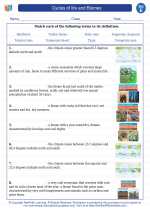Earth's Systems
The Earth can be divided into several major systems, each of which plays a crucial role in supporting life on our planet. These systems interact with each other in complex ways, and changes in one system can have far-reaching effects on the others. Understanding Earth's systems is essential for understanding how our planet functions as a whole.
Geosphere
The geosphere is the solid part of the Earth, including the rocks, minerals, and landforms that make up the planet's surface. This system is constantly being shaped by processes such as erosion, weathering, and tectonic activity. The geosphere provides a habitat for living organisms and serves as the foundation for the other Earth systems.
Atmosphere
The atmosphere is the layer of gases that surrounds the Earth. It plays a critical role in regulating the planet's temperature and weather patterns. The atmosphere is composed of several layers, including the troposphere, stratosphere, mesosphere, thermosphere, and exosphere. These layers interact with the geosphere and hydrosphere to influence the Earth's climate and support life.
Hydrosphere
The hydrosphere encompasses all of the water on Earth, including oceans, lakes, rivers, and groundwater. Water is constantly moving through the hydrosphere in processes such as evaporation, condensation, precipitation, and runoff. The hydrosphere is essential for supporting life, regulating the Earth's climate, and shaping the geosphere through processes such as erosion and deposition.
Biosphere
The biosphere is the part of the Earth where life exists. This includes the surface of the geosphere, the atmosphere, and the hydrosphere. The biosphere is home to a wide variety of organisms, from microscopic bacteria to large mammals. These organisms interact with the other Earth systems, playing a critical role in regulating the planet's environment and shaping its landscapes.
Study Guide
- What are the four major systems that make up the Earth?
- How does the geosphere influence the other Earth systems?
- Explain the role of the atmosphere in regulating the Earth's climate.
- Describe the movement of water through the hydrosphere.
- What is the biosphere, and how does it interact with the other Earth systems?
- How do changes in one Earth system affect the others?
- Discuss the importance of understanding Earth's systems for environmental science and sustainability.
Understanding Earth's systems is crucial for understanding how our planet functions as a complex and interconnected system. By studying the interactions between the geosphere, atmosphere, hydrosphere, and biosphere, scientists can gain insights into how human activities are impacting the Earth and develop strategies for promoting environmental sustainability.
[Earth's Systems] Related Worksheets and Study Guides:
.◂Science Worksheets and Study Guides Fifth Grade. Cycles of life and Biomes

 Worksheet/Answer key
Worksheet/Answer key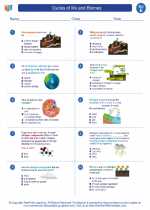
 Worksheet/Answer key
Worksheet/Answer key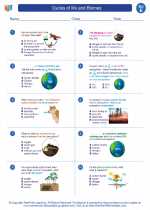
 Worksheet/Answer key
Worksheet/Answer key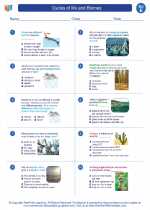
 Worksheet/Answer key
Worksheet/Answer key
 Vocabulary/Answer key
Vocabulary/Answer key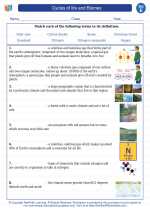
 Vocabulary/Answer key
Vocabulary/Answer key